The hop (Humulus lupulus) is a plant belonging to the family of Cannabaceae. It is famous all over the world for its use in the beer production process, and in this case we are talking about cultivated hops of which there are dozens of different varieties. But it is also a plant that grows spontaneously and is appreciated and sought after in our rural tradition for its food qualities. Its tender shoots are in fact collected and used in the kitchen in the same way as wild asparagus, with which, at times, they are confused. Finally, not everyone knows that this plant is rich in beneficial properties, which can be easily exploited in the home.
In this article we talk about the type species, that is the wild hops, and we also see the botanical characteristics to recognize it and its different uses.
The regional names of hops
As evidence of the tradition linked to the harvest and consumption of hops, here are some regional names by which the plant is known: reverdixe And vertuxi in Liguria, luvertin And vertis in Piedmont, loertis And lupol in Lombardy, loppel And lopal in Emilia-Romagna, roveja And bruscandoli in Veneto, vegetable garden And lupola in Tuscany, lupru And luparu in Abruzzo, luppo in Marche, votticella in Puglia, lepone In Calabria, luppiun in Sicily, lupulu in Sardinia.
Description of the hop plant
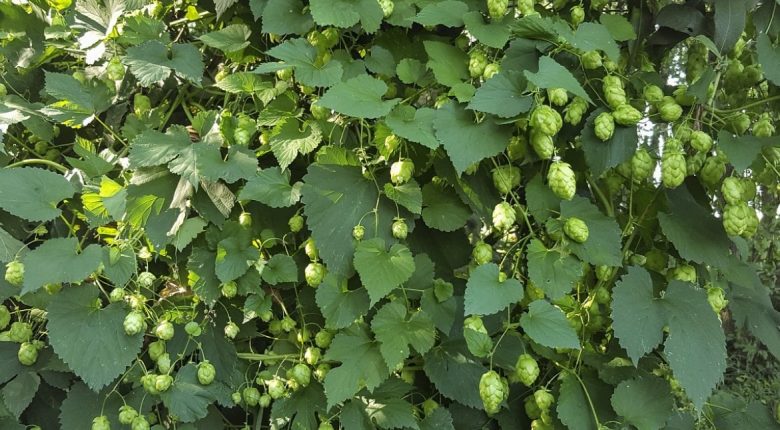
L’Humulus lupulus it is a perennial plant that sheds its leaves during the winter (deciduous). It is also considered a broad-leaved tree, that is, with broad leaves.
The root system consists of a large fleshy rhizome, from which the herbaceous stems develop. These are even more than 10 m long and can twist on any natural support (trees, walls, etc.) and not (adequate support structures in cultivated hops). Due to this characteristic, hops are considered a climbing plant.
The stems are also brownish-reddish in color and with a surface covered by short and harmless thorns.
Leaves
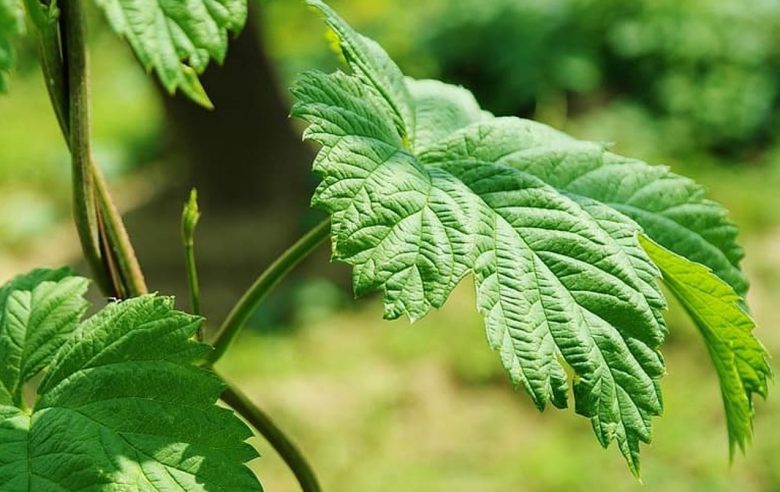
The leaves of the hops have a long petiole covered, like the branches, by numerous and thin hairs. The shape of the leaf is palmate-lobed, that is divided into 3-5 oval-elliptical lobes with an acute apex. The leaf margin, on the other hand, is abundantly toothed. In the upper part of the long stems, the leaves are simpler, heart-shaped and without being divided into lobes.
The surface is rough on the upper side, resinous on the lower side. Another feature is given by the deep ribs in evidence.
Flowers
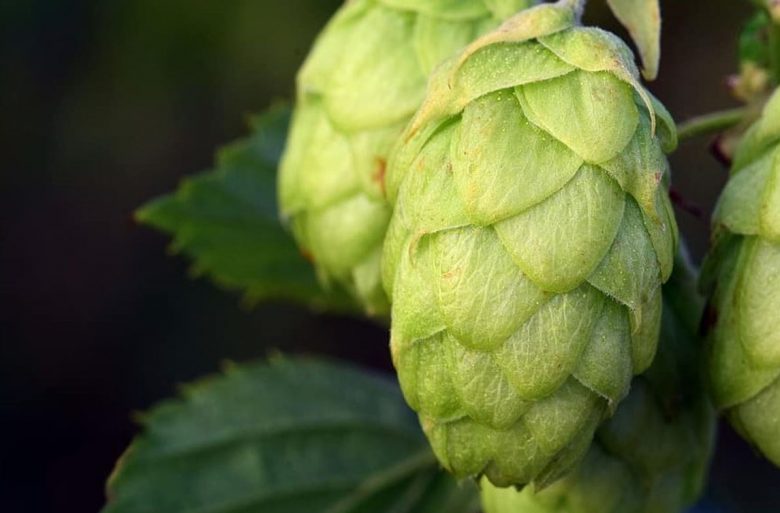
Hops are a dioecious plant, just like its close relative cannabis sativa. This means that the male and female flowers are carried on different and separate individuals. Male plants have numerous flowers, gathered in a panicle at the apex of the branches, formed by 5 tepals and 5 stamens. Female plants have flowers located two by two at the axil of bracts similar to small leaves. The latter are united to form the inflorescence called cone.
The flowering of hops takes place in the middle of summer, with pollination that is anemophilous, that is, carried out by the wind.
Fruits
The fruits are sub-round ash-colored achenes, wrapped in grown bracts. These have the surface covered with numerous glands secreting a yellow resinous substance.
Where do wild hops grow?
Hops grow spontaneously in all Italian regions, but are more widespread in the North, while it becomes rarer in the South. This is because in nature it is a plant that loves cool places and soils that are fairly rich in organic matter. It is very common along the banks of rivers and streams, at the edges of woods, at the foot of hedges and along ditches.
At an elevation level, this plant reaches up to 1200 meters above sea level.
It is extremely resistant to cold, which is why the cultivation of hops has a long tradition in Northern European countries.
What are the useful parts of hops?
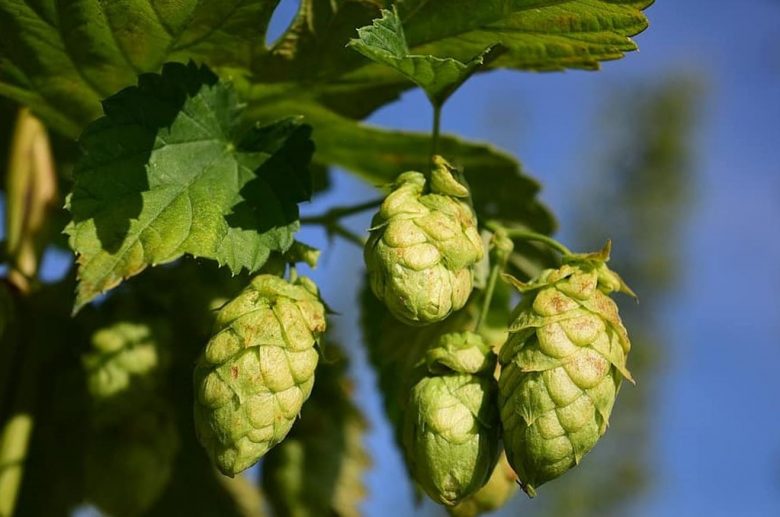
The most valuable part of the hops are the cones, or the female inflorescences. These are used in the production of beer, for their bittering and flavoring properties. Female flowers are also used in phytotherapy.
They are harvested between August and September, cutting them off at the base, without the stalk. They must then be dried in very thin layers, in the shade or in well-ventilated rooms, removing them often. In hops grown for commercial purposes, drying is the most delicate phase, as if not well done all the aromas are lost.
As mentioned, then, in our country of wild hops, tender shoots are also harvested, from March to May. These must be cut in the apical portion and for a length of 15-20 cm, and then eaten fresh.
Hops in the kitchen
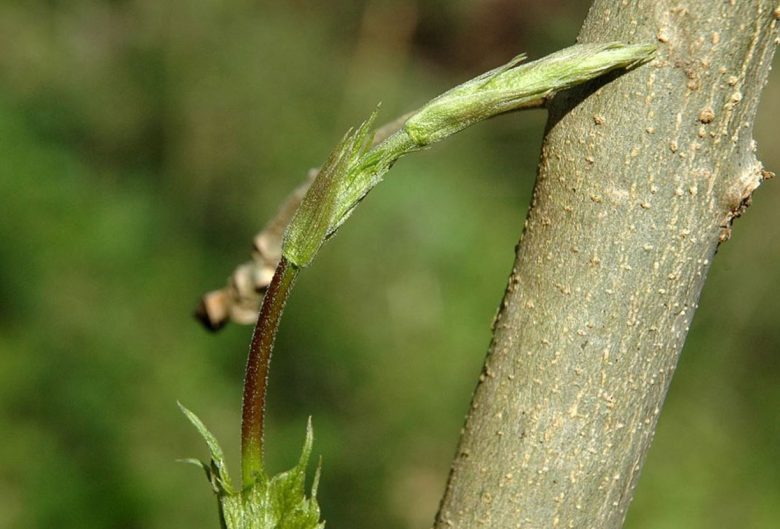
Wild hop sprouts are a real delicacy and many like them more than wild asparagus, as they are more tender and have a delicate (but still bitter) flavor. Cooking them is simple, just boil the sprouts (in water or steam) for 5-10 minutes and consume them directly in salads dressed as you like with oil and lemon. Alternatively, it can play a leading role in the preparation of numerous recipes, for example: risottos, omelettes, soups, rustic pizzas, pesto, pancakes, etc.
Active ingredients and properties of cones
The female inflorescences of hops are rich in active ingredients and properties.
THE main constituents are: resin (containing umulone), essential oil (myrcene and umulune), flavonoids, anthocyanins, sterols, estrogenic substances.
The properties are therefore the following: flavoring, bitter-tonic, sedative of the nervous and sexual sphere.
Herbal uses
In domestic herbal medicine, the female inflorescences of hops are traditionally used, at appropriate doses, as bitter tonic to stimulate the digestive processes. They also have sedative properties designed to facilitate sleep and moderate sexual impulses. This last property is to be connected with the presence of estrogenic substances. The presence of these substances must lead, among other things, to a moderate and non-continuous use of hop preparations. Excessive and continued use could give rise to side effects such as: nausea, dizziness, hypnotic phenomena.
On sale, hops can be found in the form of dry herbal tea, tincture or supplements (which you can find here).
At home you can prepare an infusion with 1 g of dry substance in 100 ml of water, to be consumed in 1-2 cups before going to bed. This preparation is indicated to help sleep, relieve anxiety and normalize digestive processes.
External use
Hops are also used for external use as a soothing agent for neuralgic, rheumatic and arthritic pains.
Finally, in cosmetics it is used to revitalize and restore firmness and brightness to senescent and wrinkled skin.

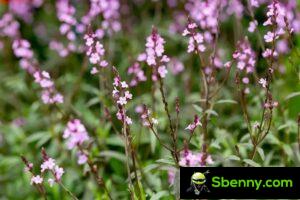
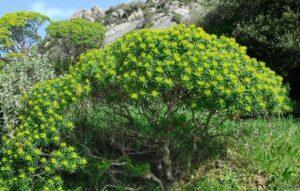
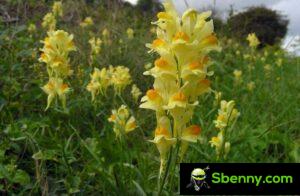

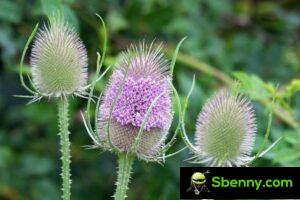
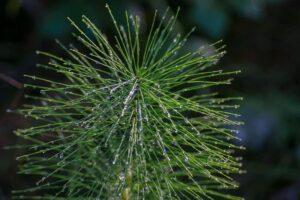
Start a new Thread